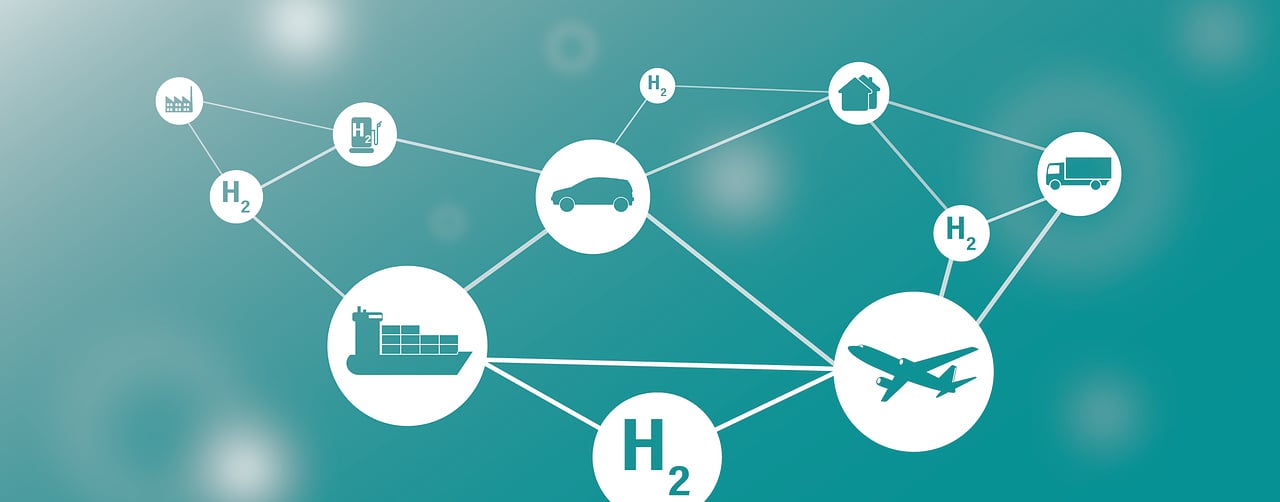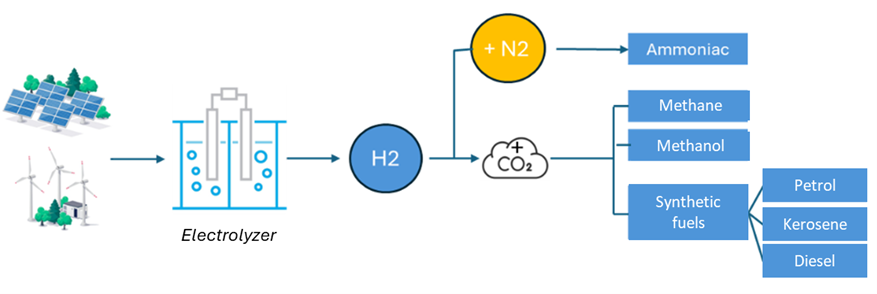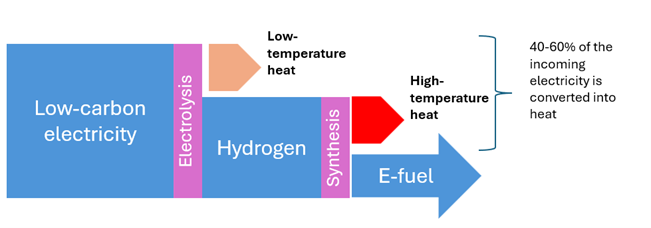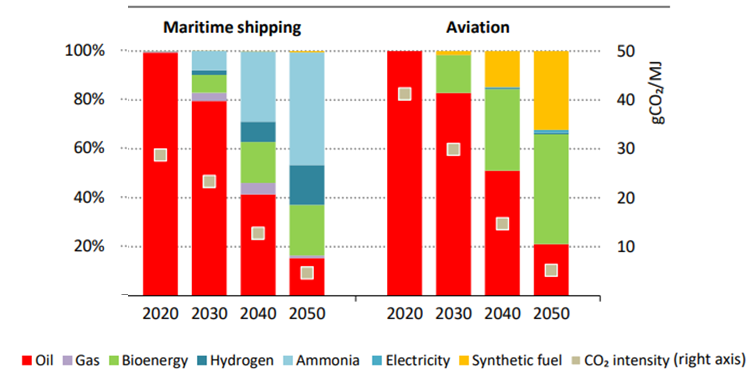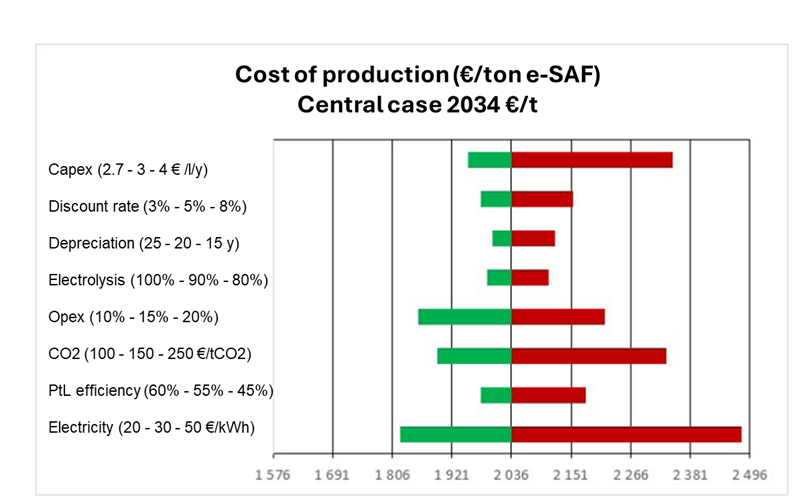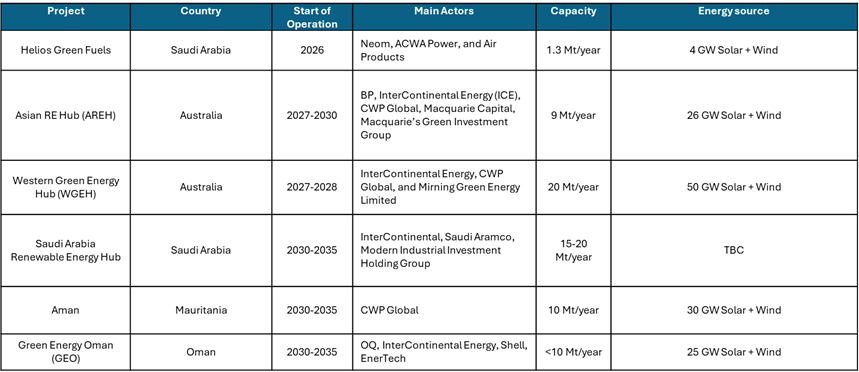1. Why are aviation and maritime transport difficult to decarbonise?
Heavy transport, whether by air, sea or even road, requires a great deal of energy to be carried on board the vehicle in order to achieve the required range and power. Today, the advantage of liquid fossil fuels (diesel, kerosene, heavy fuel oil, etc.) in terms of energy density is immense compared with electrified transport. For example, the energy content of a 550-litre semi-trailer truck tank (i.e. 400 kg of diesel) is around 5 MWh. To transport the same energy in the form of liquefied natural gas (LNG), you need a much larger tank of 850 litres (350 kg of LNG). And the same energy stored in Li-Ion batteries would require 20 tonnes of batteries occupying a volume of 10,000 litres!
The current energy density of Li-ion batteries clearly limits their use to light transport. Hydrogen compressed to 350 bars may be a good technical solution for heavy goods vehicles, or even ships (apart from cost considerations), but the volume it occupies means it cannot be used as propulsion energy for aircraft (the volume of current kerosene tanks would have to be tripled!).
Decarbonising aviation and maritime transport therefore requires other solutions. Biofuels are one, but not on the scale of the problem, given the lack of biomass resources. The use of e-fuels opens up new prospects. In the case of air transport, this is e-kerosene. For maritime transport, the two e-fuels being considered are e-methanol and e-ammonia.
2. The limits to Biofuel
In 2022, global biofuel production amounted to 4.3 exajoules (EJ), or 1,120 TWh, representing less than 4% of global fuel demand for road transport alone. The vast majority, around 90%, of these fuels were produced from sugar cane, maize, soya oil, rapeseed oil and palm oil. The remaining 10% were produced from waste and residues such as used cooking oil and animal fats.
According to the IEA (ref /1/), demand for biofuels is set to rise to 5.3 EJ (1470 TWh), or 6% of the forecast energy demand for road transport alone in 2030, as a result of the policies and additional projects planned. And this demand will continue to grow thereafter, driven in particular by air transport, depending on countries’ decarbonisation policies. As a reminder, in Europe, under the RefuelEU regulations, airlines will have to incorporate an increasing quantity of “sustainable aviation fuels” (SAFs): 2% by 2025, 6% by 2030, 20% by 2035 and gradually rising to 70% by 2050.
The biomass resources available to manufacture biofuels will clearly not be sufficient.
As a matter of fact, the most readily available feedstocks for liquid biofuels include vegetable oils, sugars, starches and fat and oil residues. These feedstocks are already widely used today and can be processed using existing technologies. But resources of this type are relatively limited, both for physical reasons and because some biomass resources, such as energy crops, are unsustainable. What’s more, the same biomass resources are often in competition for different energy uses (competition between biogas and biofuels, for example). Under these conditions, according to the IEA (ref /1/), the maximum potential could be increased to 9 EJ (2500 TWh) of biofuels by 2030, which allows very little flexibility to address both the decarbonisation needs of road transport and those of air and sea transport. It should be remembered that the annual energy requirements of the transport sector as a whole are currently around 120 EJ.
Hence the imperative need to find other solutions, such as e-fuels.
3. What is e-fuel?
E-fuels are synthetic fuels obtained from hydrogen produced by electrolysis of water. They can be of different types depending on the other elements that make them up.
Combining hydrogen with nitrogen produces ammonia, a gaseous chemical that is used today mainly as a fertiliser precursor, but also has potential applications as a fuel. Combining hydrogen with carbon produces a wide range of synthetic products, from alcohols to ethers and from hydrocarbon fuels to lubricants.
E-fuels can be classified according to their ease of use. Ready-to-use e-fuels such as e-kerosene, e-gasoil and e-gasoline are compatible with existing refuelling infrastructures and can be blended with petroleum-derived equivalents, subject to certain constraints. On the other hand, alternative e-fuels such as e-ammonia and e-methanol require investment in distribution infrastructure and the vehicles themselves (ships, HGVs, etc.) to enable them to be used in the transport sector.
There are four main stages in the production of e-fuels: the production of hydrogen (by electrolysis of water), the capture of nitrogen from the air (N₂) or carbon dioxide (CO₂), conversion into new synthetic molecules (by thermochemical processes) and finally the final recovery of the raw product.
The main process building blocks for the manufacture of e-fuels already exist on a large scale, but their efficiency still needs to be improved, and their integration into an operational production unit still lacks technological maturity. Existing or planned facilities are still at the pilot or industrial demonstrator stage.
Broadly speaking, the principle of e-fuel synthesis is as follows:
